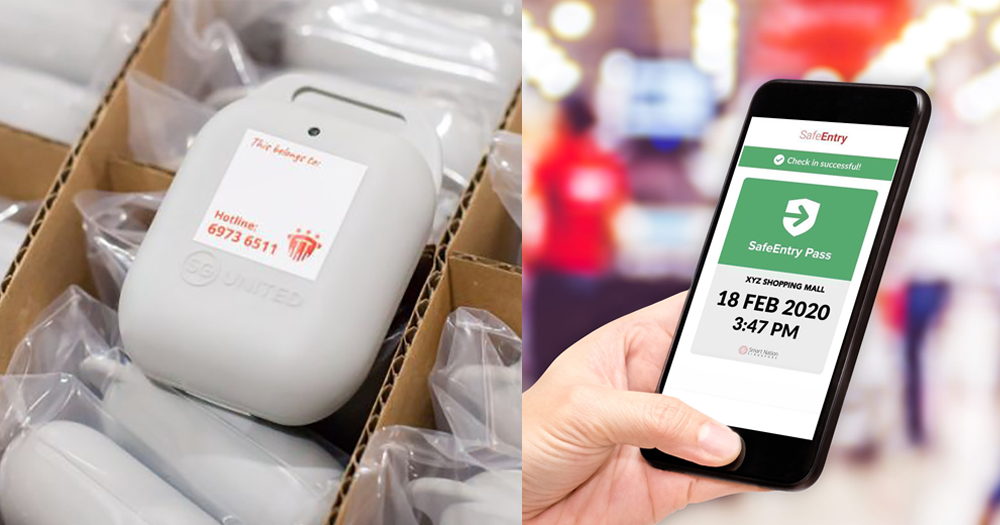Follow us on Telegram for the latest updates: https://t.me/mothershipsg
With the vast majority of Singapore's public having been vaccinated, along with a determination to live with Covid-19, the country has moved past the stage of the pandemic where contact tracing is done for every case, Health Minister Ong Ye Kung said in Parliament on Apr. 4.
The Ministry of Health (MOH) therefore no longer relies on TraceTogether to conduct contact tracing amongst the general public, he added.
"Cases who self-tested positive and go on Protocol 2 do not upload their TraceTogether data," he said. "And we rely on them to do the responsible thing to inform their contacts, to self-monitor."
Under MOH's Protocol 2, individuals who are well and tested positive, or have been assessed by a doctor to have a mild condition, should immediately self-isolate at home for 72 hours.
Contact tracing will still be retained for "vulnerable sectors" such as schools
Ong was responding to several questions raised about additional easing of measures and whether Vaccination-Differentiated Safe Management Measures (VDS) should be continued.
While mass-scale contact tracing is no longer done, it will still be retained for "vulnerable sectors" such as schools and preschools, to facilitate contact tracing within these settings.
Ong elaborated:
"So on the whole, the costs and benefits of TraceTogether changes as we make further progress in living with Covid-19. The MTF (Multi-Ministry Task Force) will therefore review its relevance and application to stand it down when it is no longer needed, while maintaining the capability to restart, should we encounter a more dangerous variant of concern."
VDS and SafeEntry are still needed to avoid increasing the workload on hospitals
This brought up Ong's point that VDS is still needed. "If we decide to do away with VDS, then there is no need for SafeEntry," he said. However, as of right now, it is still needed.
The minister elaborated:
"Even as we know that the Omicron variant is less severe than Delta, unvaccinated or non-fully vaccinated persons are still a lot more likely to fall very ill if they are infected.
As of now we have about 3.5 per cent of our adult population that are not fully vaccinated, and they account for over one-fifth of cases that require ICU care or [death]."
In addition, healthcare workers will face an increase in workload given that several restrictions have been eased and hospital visits have resumed.
"So the more cautious and correct course of action now is to keep VDS and not to risk having more non-fully vaccinated patients getting infected, and needing hospital care, and adding workload to our healthcare workers," Ong added.
Unvaccinated cases impose a cost on society
Ong added, "So make no mistake, individuals who chose not to be vaccinated, they impose a cost. And sometimes a significant one to our hospitals in terms of workload, businesses in operating safe entry checks and enforcement agencies in conducting checks."
Member of Parliament Liang Eng Hwa asked if it made sense to "inconvenience 96.5 per cent of the population", from an equity standpoint, so as to protect the unvaccinated 3.5 per cent by stopping them from entering certain public areas.
He asked if this really made a difference to the public health outcome, or if this is a move to nudge them to get vaccinated.
Ong replied:
"Is it equitable? Actually not quite. So many of us are doing so much to protect the 3.5 per cent. But is it therefore to protect public health outcomes? Answer is yes.
As I explained, hospitals are not out of the woods...in the hospitals, it is still a crisis situation, its very busy. Every day, you have hundreds of people coming to the Emergency Department, many of them with chronic illnesses, some of them infected but they don't know about it."
Part of this is due to a buildup in the business-as-usual workload with chronic cases having become more serious, he said.
As such, consideration for the dialling down or removal of VDS will only be done when hospitals are in a better position and when cases have down further, Ong added.
While it is not exactly an equitable situation, Ong said, healthcare workers need support and their workload should not be added to at this point.
Follow and listen to our podcast here
Top collage via Vivian Balakrishnan, gov.sg
If you like what you read, follow us on Facebook, Instagram, Twitter and Telegram to get the latest updates.
